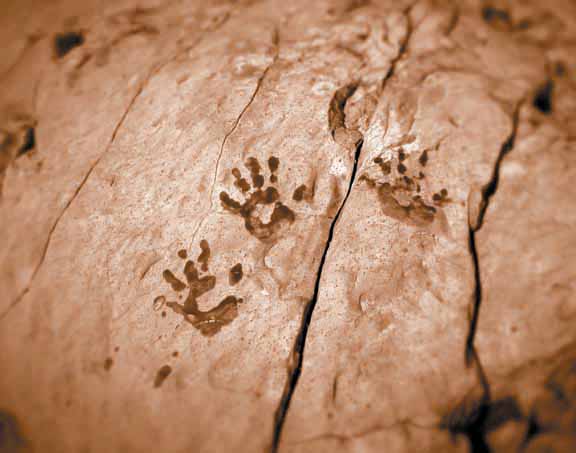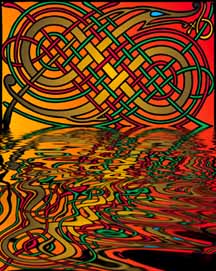

VISIONARY PHOTOGRAPHY & FINE ART
My work has been called archetypal, mythopoetic, shamanic, and visionary.
I am interested in the transpersonal, numinous and liminal in art, rather
than the time-bound, ego-driven “personal expression” that has dominated
art for the past century. The Universe is a surprising, beautiful place, full
of mystery—in many ways, my artwork simply re-creates what visions have
been given to me.
PHOTOGRAPHY:
Much of my photographic work begins in “camera walks,” a practice of active-seeing: seeing rather than merely looking, seeing what is actually present, without expectation or pre-planning, process-oriented rather than goal-oriented. The photo is a record of an encounter, an experience, a connection. It works best when "I" am quiet or absent, when there is a state of egoless being, of no-self. On a typical camera walk, I may capture only one image, or shoot several dozen. I rarely take more than one photo of what presents itself in each moment, however. Experience has shown that the process does not require shooting an entire roll of film to capture a single good image, as so many photographers do, but that one or two frames are enough.
LANDSCAPE ART:
Each piece is a collaboration with the place and time it is made. They are not my works of art alone. I respond to the energy of place, and bring to the surface what energies are there; making visible what can be felt there, rather than imposing my will or desire or taste onto the land. Making art is not an act of will or ego, it is an act of listening. Seeing and feeling what is present, making visibly manifest what is invisibly there already.
What do I call this work? Each piece is ephemeral, made completely from local materials, to be recalled only in the photographs I make of the work. The work itself will disappear after natural processes have eroded it away. Do I call it land art? Natural sculpture? Landscape art? I hesitate to call them sculptures, as I have no formal training in sculpture.
I am content for the moment to leave this work unnamed as a genre; although I am discovering that individual pieces have names, given during the making. Several pieces are clustered under one series name; or, there is a unifying thread between diverse pieces. The feeling arises equally at the shoreline and in the desert. These two extreme climates speak to me of what lies between the inhabitated places. It is like weaving with rocks, branches, sand, and light. Assembling forms from the objects at hand, not adding to them in any way; just rearranging what has been provided. A direct response to what natural processes have placed there. It’s an interesting process; all I feel that I “own” are the photos I take after completion.

BACKGROUND QUOTATIONS:
Some art is shamanic in function. Formed from collective unconscious material, it activates the unconscious of its audience and mobilizes the psyche’s self-healing capacities. It opens the door to a different reality, the world of dreams and imagination, and “spirits” silently pass into the world of every day, affecting people in unexpected ways. Shamanic art undermines unexamined cultural assumptions. For this reason it disturbs some people and may even arouse rage. Those who are open to it, however, often find that it sets their own creativity in motion. Such art tends to be prophetic. It asks, even insists, on being heard, just as shamans are compelled to tell about their inner experiences when they begin to apply what they have learned about healing themselves to the healing of others. The visionary creative act is not complete until it finds an audience, coming out into the world and disturbing the complacent surface of collective consciousness.
—Janet O. Dallett, When the Spirits Come Back
Don’t think me exalted; I’m not referring to myself; I speak for whoever feels as I do and is not naive enough to confess it. If a separate personal Paradise exists for each of us, I reckon mine must be irreparably planted with trees of words the wind silvers like poplars, by people who see their confiscated justice given back, and by birds that even in the midst of the truth of death insist on singing in Greek and saying, “eros, eros, eros.”
—Odysseas Elytis, Open Papers
The pursuit of photography is also a pursuit of will, of making us masters of ourselves so that under any conditions, including sickness and fatigue, and under the fall of rain, snow, earthquake, or sunshine, we can wield our instruments with the delicate lightning of a Samurai.
—Robert Leverant
Looking and seeing both start with sense perception, but there the similarity ends. When I "look" at the world and label its phenomena, I make immediate choices, instant appraisals—I like or I dislike, I accept or reject, what I look at, according to its usefulness to the "Me" . . . This Me that I imagine myself to be, and that I try to impose on others. The purpose of "looking is to survive, to cope, to manipulate, to discern what is useful, agreeable, or threatening to the Me, what enhances or what diminishes the Me. This we are trained to do from our first day. When, on the other hand, I SEE—suddenly I am all eyes, I forget this Me, am liberated from it and dive into the reality of what confronts me, become part of it, participate in it. I no longer label, no longer choose. ("Choosing is the sickness of the mind," says a sixth-century Chinese sage.) It is in order to really SEE, to see ever deeper, ever more intensely, hence to be fully aware and alive, that I draw what the Chinese call "The Ten Thousand Things" around me. Drawing is the discipline by which I constantly rediscover the world.
—Frederick Franck
 |
Resumés in PDF format: |
© 2000–2014 • Arthur Durkee • All Rights Reserved • CONTACT: Stickdragn@aol.com